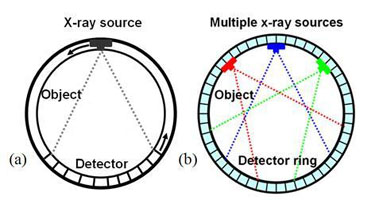CT Scanning

Recently, airports have adopted more advanced X-ray scanning systems to check passenger baggage for explosives, called computed tomography scans (also known as CT, CT scan, CAT, or computerised axial tomography).
It uses X-rays to produce precise cross-sectional images of baggage items. In a CT scanner the bag is placed in a cylindrical device. Inside the cylinder is an x-ray source that is mechanically rotated entirely around the bag.
Also, the cylinder is lined with detectors that measure the X-rays that pass through the scanned object at all angles. By collating all the information that is gathered during a full revolution of the X-ray source, a computer can form a three-dimensional model of the irradiated volume of the object and assemble a series of cross-sectional images into a single detailed image.
CT X-ray technology provides operators with much more information than conventional X-ray systems and can even go so far as to flag suspected explosive materials.
CT scanning is computation-intensive and requires rotation of the X-ray source around the scanned object, making this technique slower and much more expensive than transmission-type imaging. Since it is not practical to put all bags through the CT scanner at most airports, only suspicious” bags (e.g., those belonging to a passenger who exhibits suspicious signs) are passed through the CT scanner.
Technological improvements in CT scanning are likely to make routine CT scanning of



